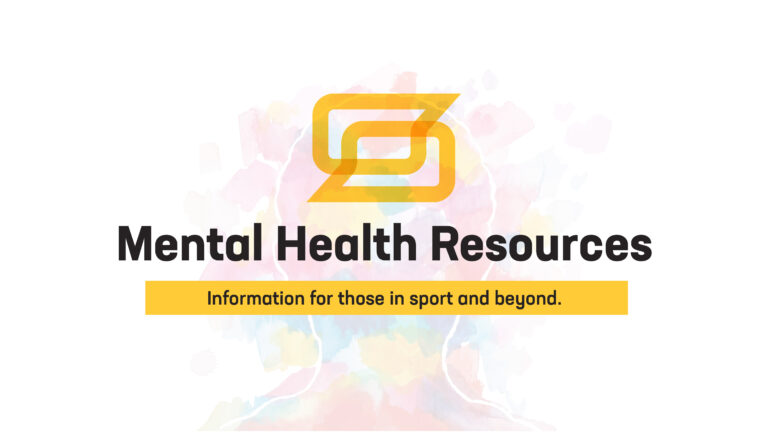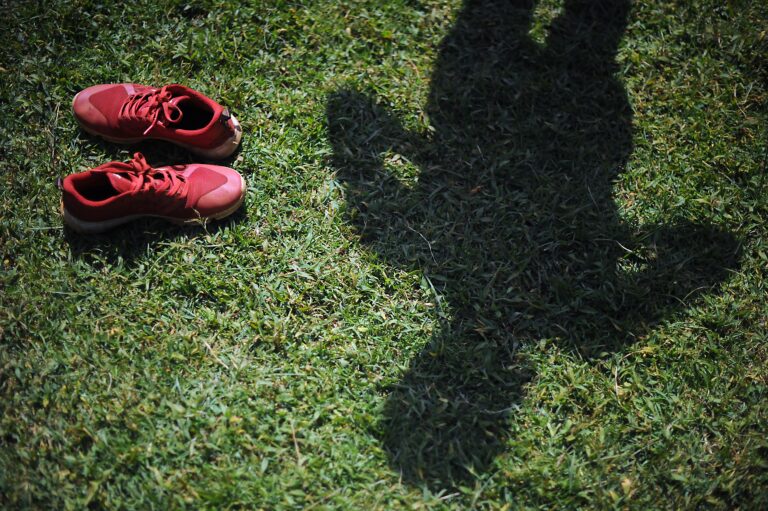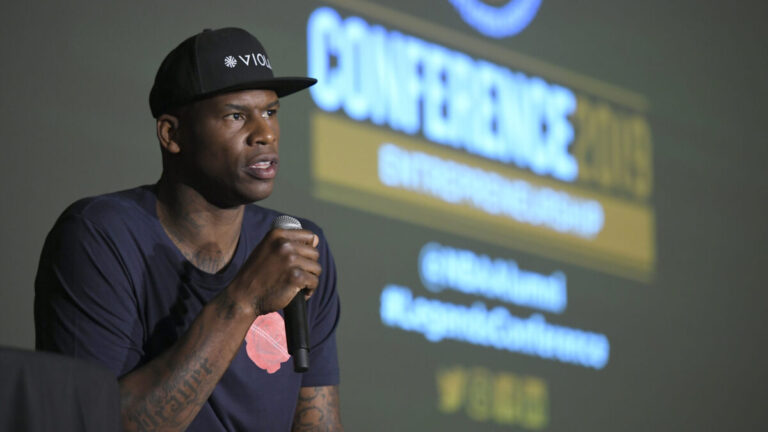NFL Rituals Disrupted: The Added Mental Stress of COVID-19
Why this matters
In a sport with high achievers that relies often on brute force to accomplish goals, it’s not surprising that mental health can be a subject that is taboo, that no one wants to talk about.
The Global Sport Matters Team cares for the health and safety of all its readers. A list of resources can be found here to help navigate the challenging experiences related to mental health in and outside of sport.
No one knew what 2020 had in store, so football's timing on mental health support couldn’t have come at a better time. In 2019, a joint Behavioral Health Agreement was implemented in the NFL with collaboration from the NFL Players Association. The agreement resulted in the formation of a mental health and wellness committee along with the requirement that all teams employ a behavioral health clinician.
Leaders on the committee are Dr. Nyaka NiiLampti, the NFL vice president of wellness and clinical services, NFLPA director of player wellness Dr. Amber Cargill and former NFL player, Dr. Don Davis (triple D to the players), who is the NFLPA’s senior director of player affairs.
Dr. NiiLampti told nfl.com, “Mental health exists on a continuum, from thriving to emotional distress. But too often we equate mental health to mental illness. So, one of the conversations that we are hoping to be able to have is really making sure [NFL players and club personnel] understand that everyone has mental health.”
Said Davis, “We want to allow players to have the space and capacity to be able to talk about the emotional part of this business, the pressure that goes with it, and how we can all work together to be healthier people or a healthier family.”
That has never been more important than in this unprecedented year that began with a pandemic declared in March, navigated through a virtual draft and offseason, and then negotiated an agreement that allowed training camps to open and a season that now enters the final four weeks with teams affected but not decimated by a virus that is currently roiling in record numbers throughout the country.
Davis played 11 seasons from 1996-2006 with the Saints, Buccaneers, Rams and Patriots before eventually earning a doctorate in education and now knows as much as anyone about the players that populate leaguer locker rooms.
But he said it “is hard to imagine” how he would have handled the daily stress of the coronavirus when he was playing.
“I’ve done the 32 team meetings,” Davis said, “and talking with the players, the ones who've been in the league for a while, it's really challenging. It's unlike any other year. So for myself, I would have tried to make it as normal as possible, but it would have been difficult.”
The environment of pro football can be stressful enough without introducing a highly contagious virus that could be lurking anywhere.
Dr. Thom Mayer, the NFLPA’s medical director, loves metaphors. Noting how players and, for that matter, everyone in the NFL are creatures of routine, he mentioned the metaphor for the ritual of simply being allowed in a team-building after advancing through high school and college to become a pro, always exceeding expectations.
“Ritual is part of what's taken them there,” Mayer said, “and that ritual has been disrupted. It's this symbol of having to earn your way into a building by adding a negative COVID test. It's just a fascinating metaphor.”
Mayer was also prescient when he knew from the outset, “We were very clear about saying that this is going to be the season of behavioral health as a major issue for both the players that get it and for the players who don't. The stress, the constant stress, the testing itself is a constant reminder that something is different. We knew this was going to be an issue with the families. And the concern, ‘Is Daddy gonna get this?’ And what does it mean?
“I've said to the players over and over in our numerous calls, when it comes to the guidelines, do it for yourself, do it for your family, do it for your teammates, which is your other family, and then do it for your community, because if you focus on keeping yourself healthy by following the guidelines and the testing protocols, that's going to protect your family. A lot of these guys are concerned about their parents as well, some of whom have risk factors.”
Arizona Cardinals right tackle Kelvin Beachum, a nine-year veteran, said the mental aspect “is literally a day-to-day thing. I'm praying that I don't test positive, praying that I can still go out and perform and be able to go and provide for my family. But it's been difficult; I can't say it has been easy. Me and my wife literally had five days to decide whether we were going to send our daughter to school (in January) when things open back up.
“We find it hard to be able to send our daughter out and put her in this type of environment because if my daughter happens to bring a case into our house, and I get tested in the building, I then have now started this chain effect that could cause myself to be positive, others that are around me from a contact tracing standpoint, to now be kicked out of the game. So mentally, yes, it's been pretty draining to have to think about not only my safety, but the safety of my daughter, the safety of my other two kids, the safety of my wife.”
Davis said a large part of the message to the players from the beginning was to “always make sure we were clear that this is about risk mitigation, not risk elimination. So those were two hurdles mentally we had to get guys over. And we just didn't know. So once you get over that, now you just try to simply create normalcy and routine out of the times that we are in. And that's what I think the players are doing now.”
Through it all, as numerous contingencies were discussed, the notion of a bubble was always a talking point and still is for the postseason where there is the possibility that a bubble is created in each team’s home city during the practice week.
As the NFL season entered December, commissioner Roger Goodell said, “We don’t see the bubble as most refer to it in one location. We feel strongly our protocols are working. We’re willing to adjust and adapt those protocols, take additional steps. I don’t see us doing a bubble in the sense that I think a lot of the media focuses on it. We may look at different ways to reduce the risks to our personnel, whether they are players, coaches or other personnel, that would limit exposures to others. We did that just last week with reducing the number of people that come into contact with players or coaches in the facilities.”
NFL chief medical director Dr. Allen Sills said in early December, “Simply being in the bubble doesn’t keep us safe. But, all options remain on the table and we will continue to look at our data. But whenever you think of structuring something for teams, you have to look at the risks and the benefits. There is no plan and there is no protocol that is going to be completely risk-free. All of this is going to carry the risk of the virus still entering. We will look at the data, meaning what we are seeing as the response to the changes we make, what the community prevalences are at that time and how we may be least exposed to the virus.”
He added, “I think this is something that is not discussed when people talk about a bubble is the human and the emotional and the behavioral health toll that takes on people.
That’s a really significant stress point and I think we have to acknowledge that just as much as a health and safety consideration as a COVID infection.”
Mayer agrees, while establishing a different way of describing a bubble. He said, “If you think about it, each club when it comes to the facility, and moving from that facility to away games, is an ecosystem. I’ve never liked the term bubble. I think it's a controlled ecosystem. Where do you go when you're not at the facility? What do you do when you're not at the facility? What is your family doing when you're at the facility, in their ecosystem, so it's almost like concentric circles of the ecosystem of the club itself.
“And then a combination of players and their families on the one side, and on the other, the club staff, including the medical staff, where the doctors go to the hospital, or their offices or the operating rooms.”
Discussing stress, endocrinologist Hans Selye was described by Mayer as “the first person who came up with this concept that stress while we use the term and think of it in a negative connotation, in fact, there is both, as he said, eustress and distress. So we tend to think of stress as distress when in fact, positive stress, eustress, is where we think about a bell-shaped curve. Stress is on the horizontal and performance on the vertical. It takes a certain amount of stress to get up in the morning, to go to the weight room, do conditioning, to play professional football, to go through the mental part of the game.
“That is all eustress designed to increase performance. It's only when you get to the top of the curve, the more stress there is, performance begins to decline. That's distress. The question is, when you're right before the peak of the curve, that's your stress-tolerance level, and one more stressor or increasing existing stressors is going to send you down the performance curve. And the question is, what do you look like when you're reaching the stress-tolerance level, when it's about to be too much? I think that's what a lot of our guys are going through. They look at having to isolate, are they a high-risk contact? Are they gonna have to sit out the game or not sit out the game? It's a season unlike any other. Zoom meetings, Zoom workouts, just a completely different change in how they think about things and how they do things.”
But all along, Mayer said, players are akin to the Myth of Sisyphus (yes, another metaphor), who futilely continued trying to push a boulder up a hill only to have it consistently roll back down before repeating it time after time.
Mayer said, “To a certain extent our players are doing the same thing week by week. They've always had to roll the boulder up the hill against impossible odds and have it roll back down.”
He then related how author and philosopher Albert Camus wrote a 20-page essay about the Myth of Sisyphus in which the closing line was, “One must imagine Sisyphus happy.”
“That’s all of us in health care,” Mayer said, “but it's also our guys. It’s one more stress, one more thing that creates stress and pushes them towards their stress-tolerance level. And yet everything I hear from the guys that I talk to is they're happy. It's a challenge, but yes, I wouldn't have wished it on anyone.”
The Global Sport Matters Team cares for the health and safety of all its readers. A list of resources can be found here to help navigate the challenging experiences related to mental health in and outside of sport.
Monthly Issue
COVID-19 & Sport
COVID-19 is the rival no one in sport could game plan for. As many live events remain at a standstill and the world keeps adapting, how is sport resetting upon its staggered returns?





